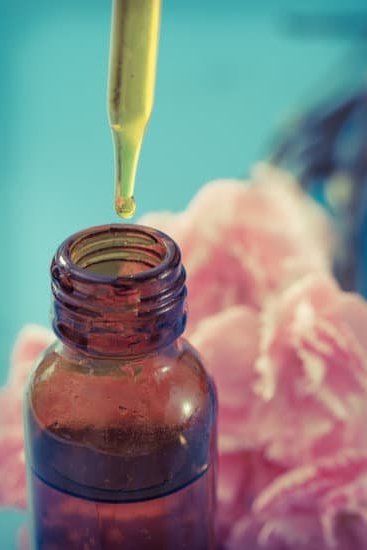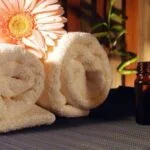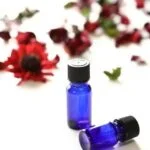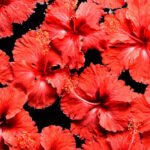Aromatherapy is a holistic practice that utilizes the power of essential oils to promote physical, mental, and emotional well-being. These concentrated plant extracts have been used for centuries for their therapeutic properties, offering a natural solution to various health concerns.
One essential tool in the world of aromatherapy is the Aromatherapy EO Reference Chart, a valuable resource for both beginners and seasoned practitioners alike. This reference chart serves as a guide to understanding different essential oils, their properties, and how to effectively use them.
Essential oils are known for their aromatic and healing qualities, making them popular in alternative medicine and skincare products. Each essential oil has its own unique scent and benefits, catering to different needs and preferences. From calming lavender to invigorating peppermint, there is a wide range of essential oils available with various uses such as promoting relaxation, reducing stress, improving sleep quality, or enhancing skincare routines.
By familiarizing yourself with the Aromatherapy EO Reference Chart, you can learn how to best utilize essential oils to address specific concerns or goals. Whether you are looking to create a custom blend for relaxation or seeking relief from headaches or muscle pain, having a comprehensive understanding of essential oils is key. This introductory section will delve into the basics of aromatherapy, providing insights into the benefits of essential oils and how they can positively impact your overall well-being.
Understanding the Aromatherapy EO Reference Chart
Aromatherapy EO Reference Chart is a valuable tool for anyone practicing aromatherapy, whether you are a beginner or seasoned practitioner. This chart acts as a guide that provides information on different essential oils, including their properties, benefits, and potential uses.
It is essential to have this reference chart on hand to help you create custom blends tailored to your specific needs and preferences. With the help of an aromatherapy EO reference chart, you can easily navigate through the vast world of essential oils and make informed decisions about which ones to incorporate into your practice.
Using an aromatherapy EO reference chart is quite simple. Typically organized in a user-friendly format, the chart lists various essential oils along with relevant information such as their botanical names, aroma profiles, therapeutic properties, and suggested applications.
By referring to this chart, you can quickly find the right essential oil for your desired outcome, whether it be relaxation, stress relief, skincare, or other purposes. Additionally, the chart may include blending suggestions and safety guidelines to ensure that you are using essential oils effectively and safely.
The importance of having an aromatherapy EO reference chart in your practice cannot be overstated. This valuable tool not only helps you identify suitable essential oils for specific purposes but also allows you to experiment with creating your own blends.
Whether you are looking to enhance your mood, alleviate physical discomfort, or simply enjoy a pleasant scent in your space, the reference chart can guide you in selecting the most appropriate essential oils for achieving your goals. Investing in an aromatherapy EO reference chart is a wise decision that can elevate your aromatherapy practice and enhance your overall well-being.
Essential Oils 101
Essential oils are concentrated liquids extracted from plants that capture their natural aroma and flavor. These oils have been used for centuries for their healing properties and therapeutic benefits. In aromatherapy, essential oils are often diffused, inhaled, or applied topically to promote physical, mental, and emotional well-being. Each essential oil has its unique scent and properties that can be beneficial for various purposes.
One of the most common essential oils is lavender. Lavender essential oil is known for its calming and relaxing effects, making it perfect for stress relief and promoting better sleep. Another popular essential oil is peppermint, which has a refreshing and invigorating scent that can help with headaches, digestion issues, and mental clarity. Tea tree oil is prized for its antibacterial and antifungal properties, making it a popular choice for skincare products.
When using essential oils, it’s important to understand their properties and potential uses to maximize their benefits. Having an aromatherapy EO reference chart can be extremely helpful in identifying which oils are suitable for specific purposes and how to properly blend them for desired effects. This chart can serve as a valuable tool for both beginners and experienced aromatherapists in creating custom blends tailored to individual needs.
| Essential Oil | Properties |
|---|---|
| Lavender | Calming, relaxing, stress-relief |
| Peppermint | Refreshing, invigorating, mental clarity |
| Tea Tree | Antibacterial, antifungal, skincare |
By familiarizing yourself with the properties of different essential oils through resources like an aromatherapy EO reference chart, you can harness the power of these natural substances to enhance your overall well-being. Whether you’re looking to improve your mood, alleviate physical discomforts or simply create a more pleasant environment at home or work, essential oils offer a versatile and holistic approach to wellness.
Creating Your Own Aromatherapy Blends
Understanding Essential Oil Properties
Before you start blending essential oils, it’s important to have a basic understanding of their properties. For example, some oils are known for their relaxing or calming effects, while others are more invigorating or uplifting. By referring to the aromatherapy EO reference chart, you can easily identify which oils fall into which categories and how they can complement each other when blended together.
Building Your Blend
When creating your own aromatherapy blend, consider the desired effects you want to achieve. Whether you’re looking for stress relief, improved focus, or a refreshing scent for your living space, the aromatherapy EO reference chart can help you choose the right combination of essential oils. Experiment with different ratios and combinations until you find a blend that resonates with you personally.
Tips for Success
To ensure a successful blending experience, start by using high-quality essential oils from reputable sources. Keep track of your recipes and results so that you can replicate successful blends in the future.
Remember to always dilute essential oils properly before applying them to the skin and store them in a cool, dark place to preserve their potency. With practice and experimentation guided by the aromatherapy EO reference chart, you’ll soon be on your way to creating customized blends that enhance your well-being and surroundings.
Safety Precautions and Guidelines
Understanding Dilution Ratios
When it comes to using essential oils, one of the most important things to keep in mind is the dilution ratio. Essential oils are highly concentrated plant extracts that can be too potent for direct application on the skin.
It is crucial to dilute essential oils with a carrier oil like coconut, almond, or jojoba oil before applying them to the skin. The general rule of thumb for dilution is about 2-3% essential oil to carrier oil for adults, but this ratio may vary depending on the specific essential oil being used.
Preventing Allergic Reactions
Before using any new essential oil, it’s important to conduct a patch test to check for allergic reactions. Apply a small amount of diluted essential oil to a small area of skin and wait 24 hours to see if there is any irritation or redness. If you experience any adverse reactions like itching, redness, or swelling, discontinue use immediately. Some essential oils are more likely to cause sensitivities or allergies, so always do your research and proceed with caution.
Proper Storage Techniques
To ensure the longevity and effectiveness of your essential oils, proper storage is key. Essential oils should be kept in dark-colored glass bottles away from direct sunlight and heat sources. Store them in a cool, dry place where they won’t be exposed to fluctuations in temperature.
Additionally, make sure lids are tightly sealed to prevent oxidation and evaporation of the oils. By following these storage techniques, you can preserve the quality of your essential oils for optimal aromatherapy use.
By understanding and implementing these safety precautions and guidelines when using essential oils, you can fully enjoy their benefits while minimizing potential risks or adverse reactions. Remember that each individual may react differently to certain oils, so always listen to your body and adjust usage accordingly. With proper care and knowledge, you can safely incorporate aromatherapy into your daily routine for enhanced well-being.
Aromatherapy for Different Purposes
Aromatherapy can be a powerful tool for promoting relaxation, reducing stress, improving sleep quality, enhancing skincare routines, and more. By harnessing the therapeutic benefits of essential oils, individuals can address a variety of physical, mental, and emotional concerns in a natural and holistic way. Understanding how to use essential oils for different purposes is key to maximizing their effectiveness in aromatherapy practices.
To begin incorporating essential oils into your daily routine for relaxation, consider using calming scents such as lavender, chamomile, or bergamot. These oils are known for their soothing properties and can help create a peaceful atmosphere ideal for unwinding after a long day. Diffusing these oils in a bedroom or living space or adding a few drops to a warm bath can promote relaxation and stress relief.
For those looking to improve sleep quality, specific essential oils like cedarwood, vetiver, or sandalwood may help create a tranquil environment conducive to restful nights. Diffusing these oils in the bedroom before bedtime or applying diluted versions to pulse points can signal the body to unwind and prepare for sleep. Incorporating consistent aromatherapy practices using these oils can support healthy sleep patterns over time.
When it comes to skincare, essential oils like tea tree, rosehip seed oil, or frankincense are popular choices due to their nourishing and rejuvenating properties. These oils can be added to carrier oils or unscented lotions to create personalized skincare blends that target specific skin concerns such as acne, aging, or dryness. Using appropriate dilution ratios and conducting patch tests prior to full-body application are crucial steps in safely integrating essential oils into your skincare routine.
Aromatherapy EO Reference Chart in Action
An Aromatherapy EO Reference Chart is a valuable tool for anyone delving into the world of essential oils. This chart serves as a guide to help users understand the properties and benefits of different essential oils, as well as how to effectively blend them for various purposes. By utilizing an EO reference chart, individuals can create custom blends tailored to their specific needs, whether it be for relaxation, stress relief, improved sleep, skincare, or other therapeutic goals.
To effectively utilize an Aromatherapy EO Reference Chart in practice, it is important to familiarize yourself with the key information provided. One way to do this is by categorizing essential oils based on their properties – such as calming, energizing, or balancing. By identifying which oils fall into each category and understanding their individual benefits, you can then refer to the chart to select the right combination of oils for your desired outcome.
Real-life examples of using an Aromatherapy EO Reference Chart include creating a soothing blend for relaxation by combining lavender, chamomile, and bergamot essential oils. Another example could be crafting an uplifting blend for focus and mental clarity using peppermint, rosemary, and lemon essential oils.
These custom blends can be used in various ways such as diffusing them in a room, adding them to bathwater or massage oil, or even creating homemade candles or beauty products. The possibilities are truly endless when you have a comprehensive Aromatherapy EO Reference Chart at your disposal.
Resources and Further Reading
In conclusion, the Aromatherapy EO Reference Chart serves as an invaluable tool for both beginners and experienced practitioners in the world of aromatherapy. By understanding how to use the chart effectively, individuals can create custom blends tailored to their specific needs and preferences. This reference guide not only provides information on essential oil properties but also offers insights into achieving desired effects for physical, mental, and emotional well-being.
As you continue your journey into the world of aromatherapy and essential oils, it is important to explore additional resources that can enhance your knowledge and skills. Recommended books such as “The Complete Book of Essential Oils and Aromatherapy” by Valerie Ann Worwood or websites like National Association for Holistic Aromatherapy (NAHA) can provide in-depth information on various essential oils, their benefits, and applications.
Additionally, tools like diffusers, carrier oils, and storage containers play a crucial role in practicing safe and effective aromatherapy techniques.
Remember to always prioritize safety precautions and guidelines when using essential oils. Dilution ratios, potential allergic reactions, and proper storage techniques are key factors in ensuring a positive aromatherapy experience.
Whether you are seeking relaxation, stress relief, improved sleep quality, skincare benefits, or other purposes, integrating the Aromatherapy EO Reference Chart into your practice will help you unlock the full potential of essential oils for holistic well-being. Start exploring the world of aromatherapy today and embark on a journey towards improved health and wellness.
Frequently Asked Questions
What Are the 12 Must Have Essential Oils?
Essential oils have become increasingly popular for their various benefits. Some of the must-have essential oils include lavender, tea tree, peppermint, eucalyptus, lemon, rosemary, chamomile, frankincense, bergamot, jasmine, ylang-ylang, and cedarwood.
How Many Drops of EO in a Diffuser?
The number of drops of essential oil you should put in a diffuser depends on its size and capacity. In general, it is recommended to start with 3-5 drops for smaller diffusers and adjust based on personal preference and the intensity of the scent desired.
What Are the Most Powerful Anti Inflammatory Essential Oils?
Essential oils are known for their anti-inflammatory properties that can help reduce pain and inflammation in the body. Some of the most powerful anti-inflammatory essential oils include lavender, chamomile, eucalyptus, peppermint, ginger, frankincense, helichrysum, rosemary, turmeric, and myrrh. These oils can be used topically or aromatically to relieve inflammation and promote healing.

Are you looking for a natural way to improve your health and wellbeing?
If so, aromatherapy may be the answer for you.





